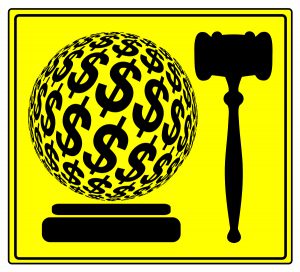Why Are Punitive Damages So Large?
 Michael Babboni
Personal Injury
Most people are familiar with the idea of someone taking a lawsuit to court for the purposes of getting money from someone that has wronged that individual. But there are lawsuits, and then are punitive lawsuits that go down in both legal and financial history as unprecedented events. Betty Bullock is one of those legal milestones.
Michael Babboni
Personal Injury
Most people are familiar with the idea of someone taking a lawsuit to court for the purposes of getting money from someone that has wronged that individual. But there are lawsuits, and then are punitive lawsuits that go down in both legal and financial history as unprecedented events. Betty Bullock is one of those legal milestones.On October 4, 2002, after a landmark case against the Phillip Morris company that manufactures cigarettes, Betty Bullock, a lung cancer victim, made a mark in American courts that is likely to never be repeated again. The jury was found in favor of her lawsuit against the tobacco company, on all counts of strict liability, negligence and fraud for failing to disclose that smoking cigarettes was medically unsafe. She was awarded US$ 28 billion dollars. That is the single largest punitive damage amount that has ever been awarded to one individual.
Two months later, in December, the courts, while not disagreeing with the verdict of the jury, did eventually decide that the initial amount was too extreme. They reduced the punitive damages down to a “mere” US$ 28 million instead. However, the “damage” had been done; everyone was in awe of the huge amounts of money that could be involved in a punitive damage case. So why does this happen?
The Exception, Not The Rule
First off, it should be noted that spectacular punitive damage cases like that of Betty Bullock are extremely rare. In fact, punitive damage cases themselves that go all the way to court are fairly rare, and only about 2% of all punitive damage cases result in those damages being successfully awarded to the plaintiff.
The role of punitive damages in lawsuits is a contentious one. Punitive damages are a form of financial punishment, designed not to compensate a victim for losses, but to aggressively financially damage the plaintiff, either as a form of “economic revenge” or to send a message to others that such practices will not be tolerated and will target the defendant where it may hurt most—the bank account.
It is for this reason that the concept of punitive damages is controversial enough that some states don’t even allow punitive damages to enter into a lawsuit. If you live in Washington State, Louisiana, or Nebraska, adding punitive damages to your lawsuit wouldn’t be possible.
The Florida Way
Here in Florida, punitive damages do exist, but they require very specific circumstances in order to be added to a lawsuit. One factor that may allow for punitive damages is the presence of “intentional misconduct.” This means that an act of negligence was actually deliberate, such as a pit bull owner with an aggressive animal leaving the animal in an area where it is hoped the animal will attack children.
Gross negligence is the other instance where punitive damages may be allowed. The management of a fair failing to properly maintain a ride which then results in the death of multiple passengers would be a tragic example of this. However, in both of these cases, there is a limit to the amount allowable for punitive damages. In most situations in Florida, it is about $500,000 or three times the amount of compensatory damages, whichever is greater.
